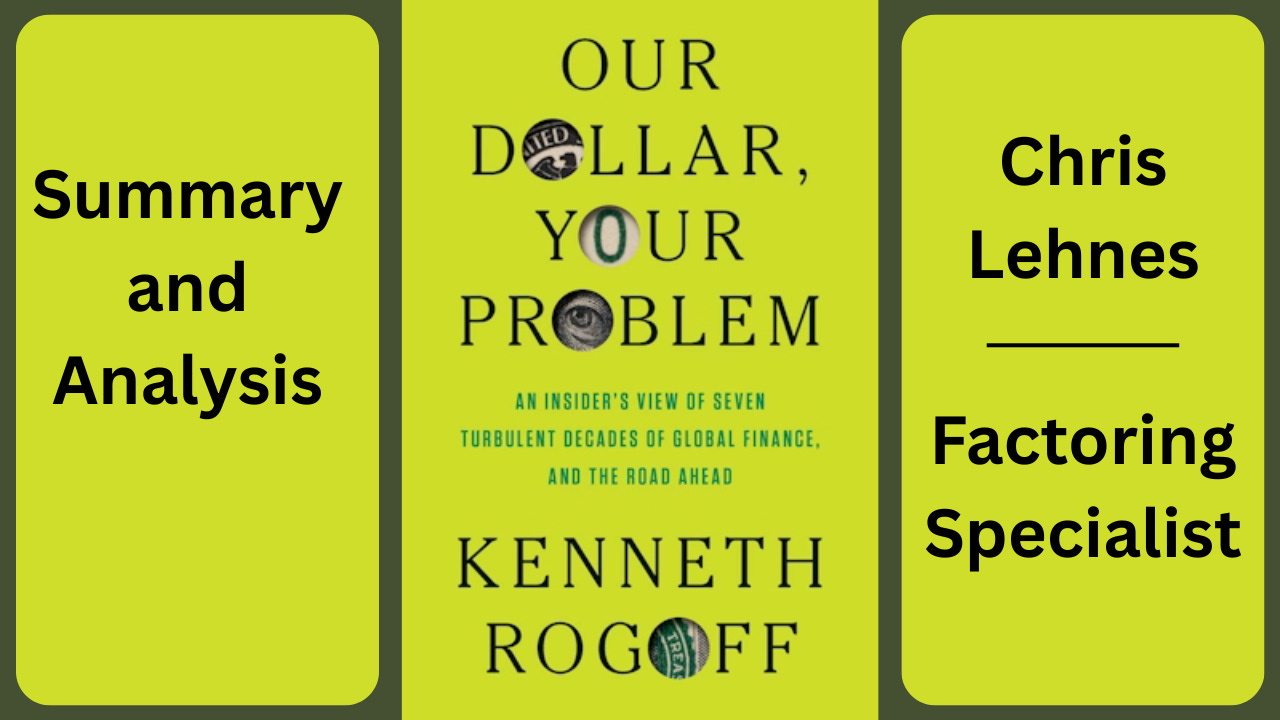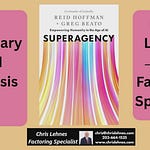Title: Our Dollar, Your Problem: A Deep Dive into Kenneth Rogoff’s Insight on the Dollar’s Dominance and Future
Introduction
In his sweeping narrative "Our Dollar, Your Problem: An Insider's View of Seven Turbulent Decades of Global Finance, and the Road Ahead," Kenneth Rogoff delivers a rare blend of historical context, insider perspective, and forward-looking analysis. His experience as a former chief economist of the International Monetary Fund and a Harvard economist grants him unique credibility to speak on the global role of the U.S. dollar, its ascent to dominance, its profound influence on the world economy, and the precarious road it now treads. This analysis aims to summarize the core themes of Rogoff's book, dissect the economic principles that underpin his assertions, and evaluate the implications of his forecast for global finance.
Part I: The Historical Ascent of the Dollar
The story of the U.S. dollar is intrinsically tied to the evolution of the global financial system. Rogoff traces this arc beginning with the end of World War II, where the United States emerged not only militarily dominant but economically unscathed compared to its war-torn European and Asian allies. This set the stage for the Bretton Woods Agreement, a monetary framework wherein the dollar was pegged to gold, and other currencies were pegged to the dollar.
Through the Bretton Woods system, the U.S. dollar became the world’s de facto reserve currency. The system cemented the dollar’s role as a stable intermediary, enabling trade and rebuilding efforts globally. Even when the gold standard was abandoned in the early 1970s, the dollar's dominance persisted due to the relative strength and openness of U.S. financial markets, deep liquidity, and the unparalleled geopolitical influence of the United States.
Rogoff illustrates how this privilege, often termed the "exorbitant privilege," allowed the United States to borrow in its own currency, maintain current account deficits for decades, and serve as a safe haven during times of crisis. Nations worldwide accumulated vast reserves of dollars, buying U.S. Treasury bonds and enabling low-cost borrowing for the U.S. government.
Part II: Characteristics of the Dollar System
Rogoff unpacks the mechanics that sustain the dollar's supremacy. Central to this is the network effect: once a currency becomes the standard, it remains so because others use it. The dollar is used in international trade, global debt issuance, and central bank reserves. Even commodities like oil are priced predominantly in dollars.
This self-reinforcing loop benefits the United States by ensuring consistent demand for its currency. It also bestows indirect control over global finance, as U.S. policies reverberate through interconnected economies. However, Rogoff warns that this system creates dependencies. Emerging markets, for instance, must monitor U.S. interest rate decisions closely, as rate hikes can trigger capital flight and currency depreciation in dollar-indebted economies.
The dollar's role has also made U.S. financial markets a magnet for foreign capital. The transparency, rule of law, and institutional stability of the United States make it a preferred destination for global investors. However, this attraction is not immutable, and Rogoff suggests that these pillars are increasingly under strain.
Part III: Contemporary Threats to Dollar Dominance
Rogoff highlights several emerging threats that, if unaddressed, could erode the dollar's primacy. Chief among these is the deterioration of U.S. fiscal discipline. With federal debt levels now exceeding the size of the economy, questions loom about the long-term sustainability of U.S. government spending. High debt levels may lead to inflationary pressures, devaluation fears, and ultimately, a loss of faith in the dollar.
The increasing politicization of institutions like the Federal Reserve further threatens monetary policy credibility. When market participants perceive central banks as extensions of political will rather than independent arbiters of price stability, confidence in the currency they manage can wane.
Rogoff also critiques protectionist policies, trade wars, and the weaponization of financial instruments such as sanctions. While these tools may serve short-term strategic interests, they can drive other nations to seek alternatives to the dollar to avoid vulnerability to U.S. economic coercion.
Technology, too, poses a challenge. The emergence of digital currencies, central bank digital currencies (CBDCs), and decentralized finance (DeFi) platforms represent a paradigm shift. While none yet rival the dollar in scale or trust, Rogoff notes their rapid advancement and the willingness of major powers like China and the European Union to explore digital alternatives. If these efforts bear fruit, they could chip away at the dollar's dominance over time.
Part IV: The Global Implications of a Declining Dollar
Rogoff dedicates considerable attention to the global consequences of a retreating dollar. The dollar’s decline, he argues, wouldn’t be an isolated U.S. issue but a systemic transformation with worldwide ripple effects.
Emerging markets, which often denominate debt in dollars, would face increased risk if dollar liquidity dried up or became more expensive. These economies could face balance-of-payment crises, stunted growth, and fiscal instability.
More broadly, a multipolar currency world could lead to fragmentation and inefficiencies in the global financial system. With no clear successor to the dollar, a vacuum could emerge, leading to heightened volatility, reduced cross-border investment, and impaired trade. Rogoff suggests this scenario could mirror the interwar period—a time of great currency instability that preceded World War II.
In this environment, global institutions like the International Monetary Fund and the World Bank would struggle to maintain order. Without a single anchor currency, coordinating policy responses to crises would be far more difficult. Additionally, capital markets might fracture, with regional blocs forming around dominant currencies like the euro, yuan, or a future digital currency.
Part V: The Case for Reform and Renewal
While Rogoff paints a sobering picture of the challenges facing the dollar, he also outlines a path forward. He argues that the dollar’s dominance can be preserved if the United States acts with foresight and discipline.
Foremost is the need for fiscal responsibility. Reducing budget deficits and stabilizing the national debt would restore confidence in the sustainability of U.S. economic policy. This entails politically difficult choices—tax increases, entitlement reform, and curbing discretionary spending—but Rogoff insists the alternative is far worse.
Equally important is maintaining the independence and credibility of the Federal Reserve. A politically compromised central bank cannot provide the monetary stability required to underpin a global reserve currency. Rogoff emphasizes the importance of insulating the Fed from partisan pressures and reaffirming its commitment to low inflation and full employment.
Rogoff also urges the United States to embrace financial innovation. Rather than resisting digital currencies, the U.S. should lead in developing a dollar-based CBDC. This would ensure that the dollar remains relevant in a digitized global economy and preempt efforts by rival states to dominate new financial architectures.
Finally, Rogoff calls for renewed global cooperation. The dollar-centered system has thrived not solely due to U.S. actions but through multilateralism. Agreements on capital flows, trade rules, and financial regulation have helped sustain global stability. Reviving international institutions and engaging constructively with allies would strengthen the legitimacy of the dollar's role.
Part VI: Forecasting the Road Ahead
In the final portion of his book, Rogoff provides several scenarios for the future of the dollar. The best-case scenario involves gradual reform, where the U.S. regains fiscal discipline, embraces innovation, and renews its international commitments. In this case, the dollar remains dominant, albeit in a more competitive landscape.
A more troubling scenario involves fiscal drift, political instability, and technological stagnation. In such a world, the dollar slowly loses ground to rivals. Global investors diversify away from dollar-denominated assets, and the dollar's share of reserves declines incrementally. This outcome would not be catastrophic, but it would diminish U.S. influence and raise borrowing costs.
The worst-case scenario is a sudden loss of confidence in the dollar. Triggered perhaps by a debt crisis or geopolitical shock, global markets could flee the dollar en masse, leading to financial turmoil. Rogoff considers this unlikely but not impossible, particularly if policymakers ignore warning signs.
Conclusion: A Call to Action
"Our Dollar, Your Problem" is both a history lesson and a policy manifesto. Rogoff argues persuasively that while the dollar has enjoyed a unique status in global finance, this position is not a birthright. It has been earned through decades of sound policy, institutional credibility, and geopolitical leadership.
However, maintaining this status requires vigilance. The threats Rogoff outlines—fiscal recklessness, political interference, protectionism, and technological complacency—are real and growing. The consequences of inaction could be severe, not just for the United States but for the entire global economy.
Rogoff’s vision is ultimately one of cautious optimism. With the right mix of discipline, innovation, and diplomacy, the dollar can continue to serve as the bedrock of global finance. But the clock is ticking, and the window for action is narrowing. Policymakers, economists, and citizens alike must engage with the questions Rogoff raises, for the future of the dollar is not just America’s concern—it is, indeed, the world's problem.












